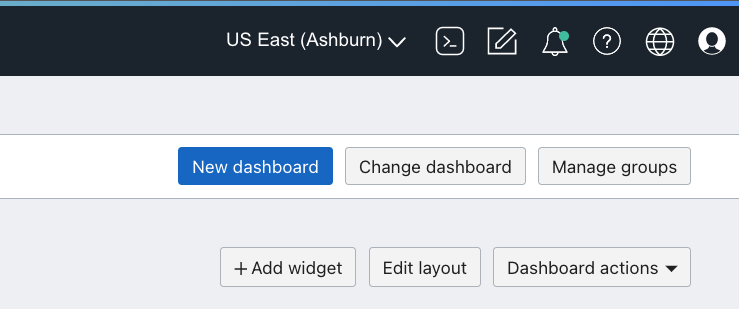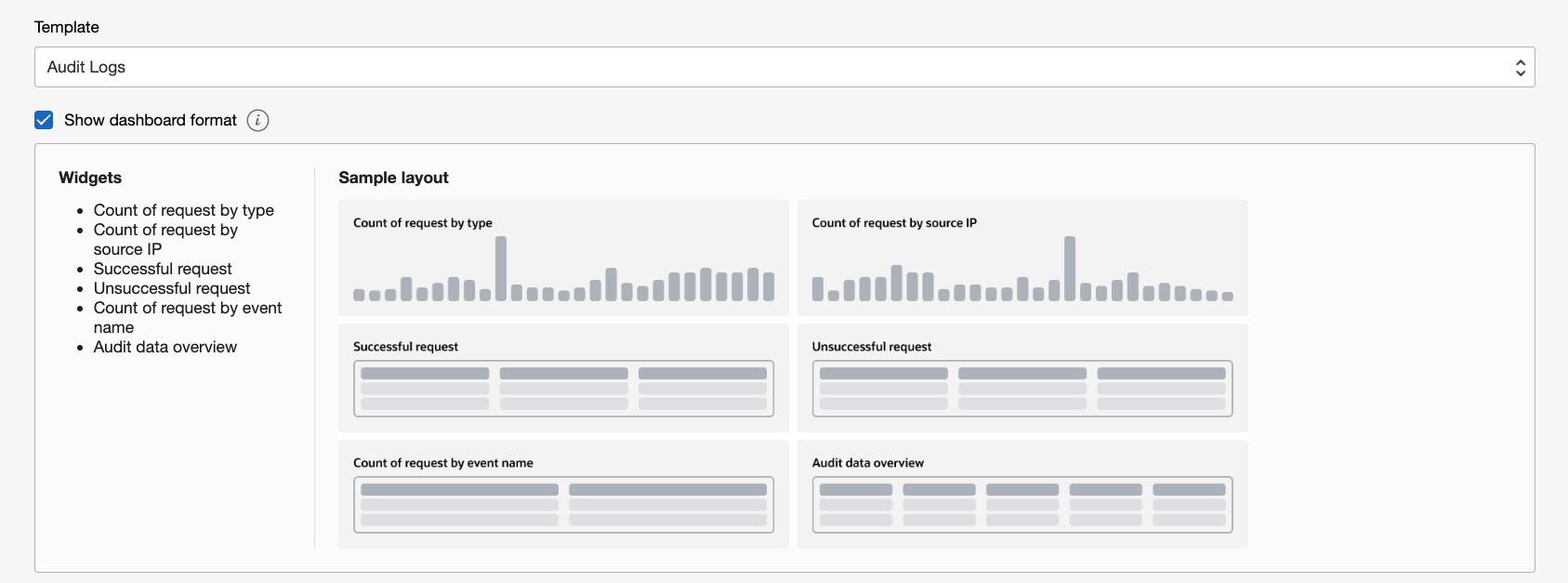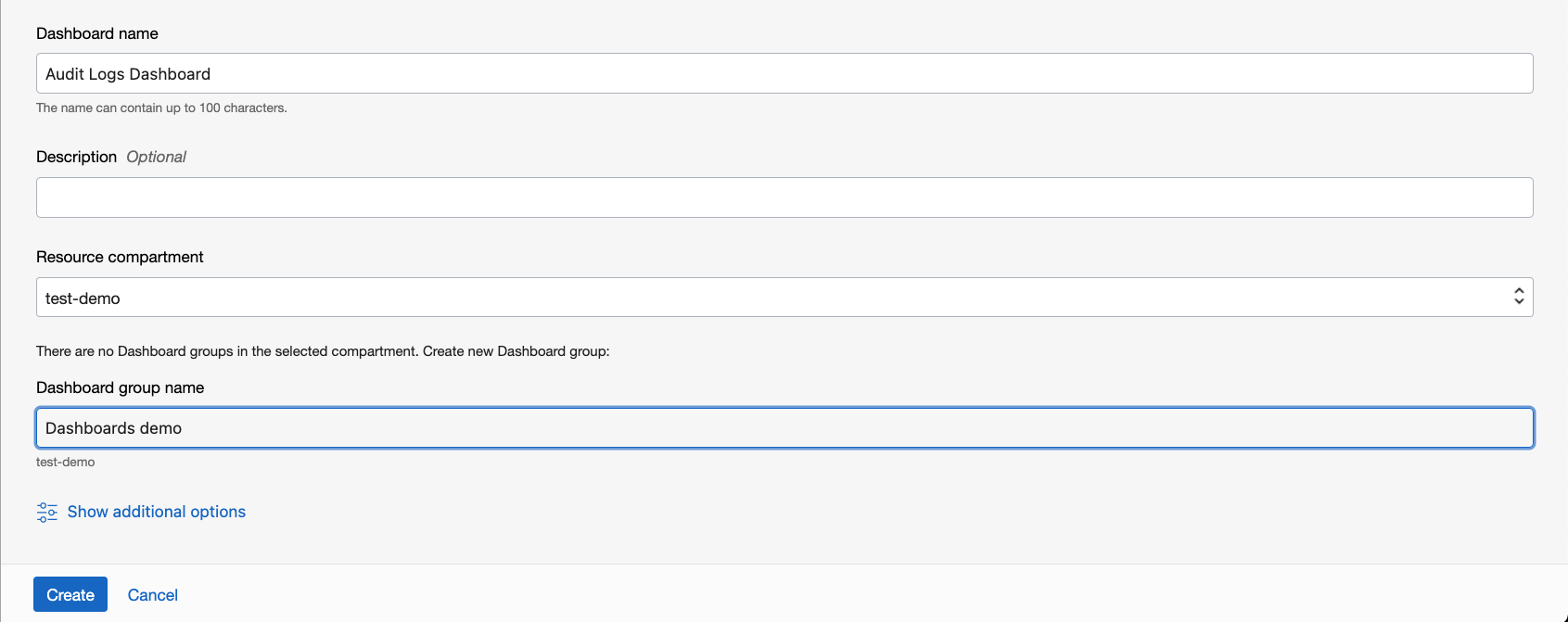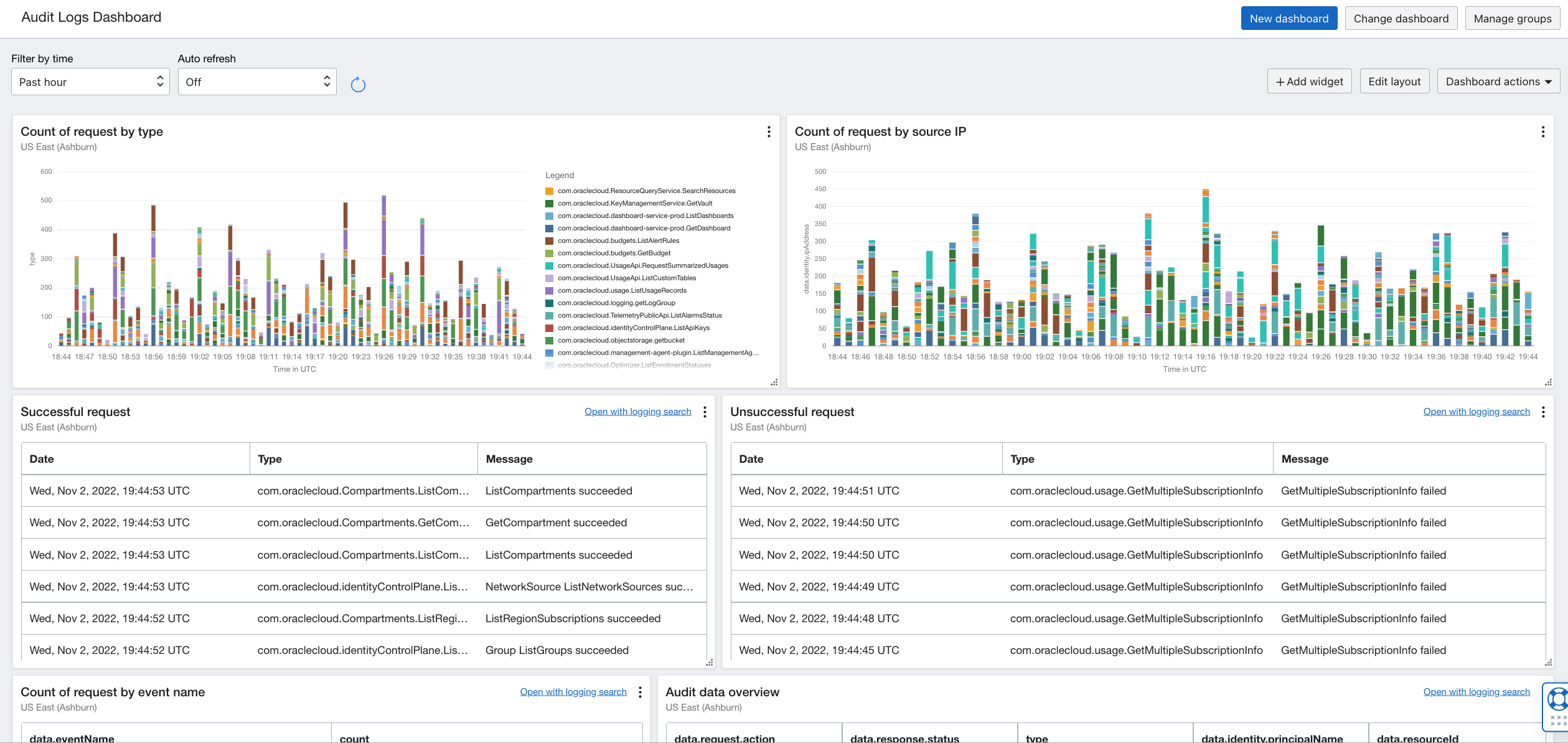Today, we’re introducing templates, a new way to create custom dashboards within Oracle Cloud Infrastructure (OCI) Dashboards. When you create a dashboard, you can choose to start with a blank canvas or from a library of templates. When using templates, you get a set of widgets for the specific use case out of the box. The following templates are now available in Dashboards:
-
VCN flow logs: Inspect networking traffic data and view details about accepted and rejected traffic.
-
Audit logs: View requests by type, event, and source IP. Analyze audit logs for successes and failures.
-
Object Storage logs: View Object Storage operation counts by type. Analyze successful and unsuccessful requests.
-
Cost analysis: View your resources at a glance, track infrastructure subscriptions, and review your infrastructure spend by service, compartment, and region.
Dashboards automatically pulls data from the OCI Logging service for the first three templates. Ensure that you have access to the Logging service to get useful data or you only see empty charts in your dashboard.
Creating a dashboard
In the Dashboard tab of the Oracle Cloud Console, click the New Dashboard button.

This selection opens the Create New Dashboard panel. In this panel, you can see two options on how to proceed. Choose the first option, Start with a Template. If you want to create your own custom dashboard by adding widgets one by one, use Build from Scratch.

Selecting a template
After selecting Start with Template, you can see a few fields that require configuring. Select the template you want to proceed with. Clicking the template exposes the menu of options.

We select Audit Logs from this menu. After the field, a preview visual shows what widgets this template comes preconfigured with and what the new dashboard layout looks like.

Next, configure the other fields, such as giving your dashboard a name and selecting which group and compartment it lives in. Now, you’re ready to click the Create button.

Your audit logs dashboard is now live! Using preconfigured widgets, you get a rich dashboard showing audit log charts and data tables for different queries, all in one place.

Updating the dashboard
With a few clicks, you landed in your very own audit logs dashboard. If you need to make any edits, you can click the Add Widget or Edit Layout options. Any updates to this dashboard are local and don’t affect the definition of the templates provided. You can use the template to create as many new dashboards as you like. Read more about using dashboards in Managing Console Dashboards.
Conclusion
No matter your use case, dashboards are crucial for visualizing your cloud data. Now, you can build dashboards quickly and easily with templates for virtual cloud network (VCN) flow logs, audit logs, Object Storage logs, and cost analysis. The OCI Dashboards service is free to use and accessible through the Oracle Cloud Console, CLI, and REST API. Sign up for an Oracle Cloud Infrastructure Free Trial or sign in to your account today to build your own dashboards!